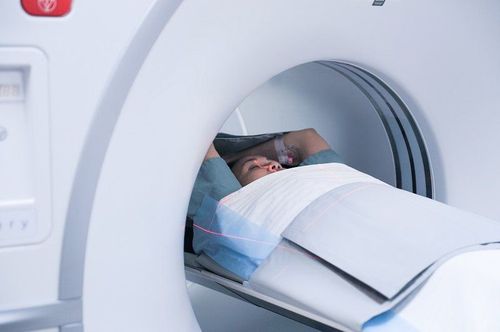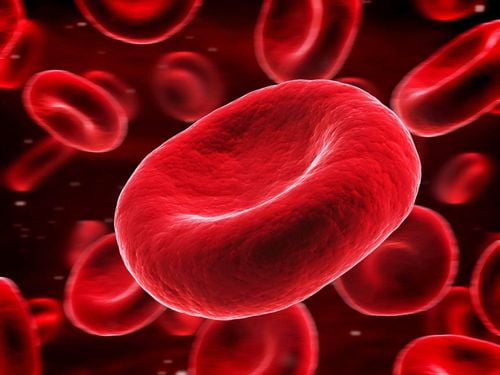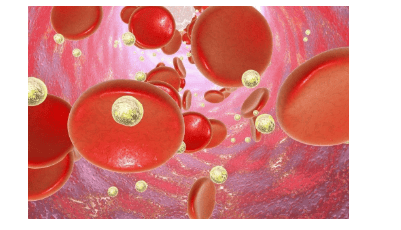This is an automatically translated article.
Atgam slows or stops T lymphocytes from attacking the bone marrow to help normal blood formation. This product is used in certain hematopoietic diseases or to prevent transplant rejection.
1. Uses of Atgam
Atgam is a polyclonal antibody, also known as an immunoglobulin, that is administered intravenously (either intravenously or intravenously). Atgam is used against a type of white blood cell called a T lymphocyte (also known as a thymocyte or a T cell). T lymphocytes are part of the immune system. In some blood disorders (such as aplastic anemia, myelodysplastic syndromes), T lymphocytes can mistakenly attack the patient's own bone marrow. This makes it difficult for the bone marrow to make healthy blood cells. Atgam slows or stops T lymphocytes from attacking the bone marrow so that the patient's hematopoiesis returns to normal.
The first step in making Atgam is to take donated human white blood cells (T lymphocytes) and inject them into horses. Horse blood makes its own antibodies (a type of protein in the blood) against these T lymphocytes. These antibodies are then taken from the horse's blood and made into the drug Atgam. With Atgam infusion, the patient's body can take the antibodies (made by the horse) and use them to slow or stop their own T lymphocytes from attacking the bone marrow.
2. Who should use Atgam?
Atgam is approved in the United States for the following:
Control of moderate to severe aplastic anemia. This is a blood disorder where stem cells are damaged; Preventing the patient's body rejection after kidney transplant. In some cases, Atgam may be used for other blood disorders, including:
Prevent or reduce the effects of acute graft-versus-host disease (GvHD) before or after cell transplantation. origin; Stimulating the bone marrow to produce new blood cells in patients with myelodysplastic syndromes. The treating doctor will be the one to decide whether the patient is suitable for treatment with Atgam drug or not. This decision depends on a variety of factors, including CBC results, comorbidities, and other treatments the patient has had.
3. How to use Atgam
Atgam used by intravenous line, usually done in medical facilities. Patients should be closely monitored during Atgam infusion, which can take several hours.
One of the most common side effects of Atgam is allergies. Healthcare professionals may perform allergy skin tests prior to infusion to see if the patient is allergic to Atgam. With this method, the doctor will inject a small amount of Atgam into the patient's skin and monitor for allergic reactions. Depending on the results of this method, the patient may need to use additional anti-allergic drugs before the Atgam infusion to prevent or limit allergic reactions. These medications include steroids (such as methylprednisolone), histamine H1 receptor antagonists (Diphenhydramine), and pain relievers and fever reducers (Acetaminophen).
When starting the Atgam infusion, the patient will be closely monitored for any signs of an allergic reaction or any other side effects. The patient's blood pressure, body temperature, and capillary oxygen saturation will be checked multiple times.
4. What are the risks of using Atgam?
Some of the most common risks of Atgam infusion include:
Allergic reactions, including anaphylaxis. The medical staff will monitor the patient for the following symptoms, including fever, chills, itching, swelling, hives, difficulty breathing, hypotension, nausea, vomiting; Impaired immune system function, manifestations include: Decreased white blood cell count; Decreased platelet count; Rash . Atgam is made from blood products, so there is a small risk that it is contaminated with infectious agents. However, some important measures will be taken during production to prevent this from happening.
Patients should avoid receiving live attenuated vaccines while being treated with Atgam, as they may not have the desired effect. Those vaccines include the Herpes zoster vaccine (Zostavax), the oral polio vaccine, the measles vaccine, the inhaled flu vaccine (FluMist®), the rotavirus vaccine, and the yellow fever vaccine. .
If you have an infection or are being treated for an infection, tell your treating doctor right before receiving Atgam.
5. When should a sick person contact a doctor?
During Atgam infusion, medical staff will closely monitor the patient. It is important that the patient be sure to notify the doctor immediately if any unusual symptoms appear. After completing the Atgam infusion and being discharged from the hospital, the patient should note the following issues and contact the doctor immediately:
Short of breath; Chest pain, dizziness; Fever or chills; Patients are likely to develop "serum disease" after treatment with Atgam. This condition may occur immediately or 1-2 weeks after the first dose of Atgam infusion. The patient should contact the doctor if the following symptoms occur:
Rash; Fever; Pain and joint pain. Patients should talk to their doctor about whether it is safe to take Atgam during pregnancy or childbirth. Note that patients should not breast-feed while taking Atgam.
Atgam drugs work to slow or stop T lymphocytes from attacking the bone marrow to help normal blood formation. This product is used in certain hematopoietic diseases or to prevent transplant rejection.
Follow Vinmec International General Hospital website to get more health, nutrition and beauty information to protect the health of yourself and your loved ones in your family.
Please dial HOTLINE for more information or register for an appointment HERE. Download MyVinmec app to make appointments faster and to manage your bookings easily.
Reference source: oncolink.org












